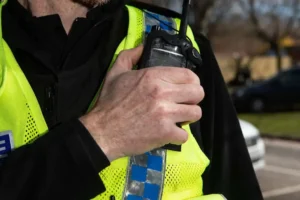As England and India engage in the deciding Test match of an enthralling summer this week, some of the sounds of leather on willow will have a distinctly North Yorkshire ring.
That’s because many cricket stars use bats made from willow grown at the Newburgh Priory Estate near Coxwold.
It has been growing cricket bat willows for the iconic bat manufacturers Gray-Nicolls for the past 15 years.
Current cricketers who use Gray-Nicolls bats include England’s Harry Brook and Tammy Beaumont, New Zealand’s Kane Williamson and Pakistan’s Mohammad Rizwan.
Brook used his bat to hit 158 against India in the Test against India this month.
Retired legends Sir Alistair Cook, Brian Lara, Clive Lloyd and Ian and Greg Chappell loved their Gray-Nicolls bats too.

Typically, it takes 15 years for the willows, full name Salix alba Caerulea, to be ready to be used in first class and Test matches, as well as the Indian Premier League (IPL).
They have recently hit the headlines as Jeremy Clarkson has just planted a number at his farm in his popular Prime television series Clarkson’s Farm.
Neil Gray, managing director of Gray-Nicolls explained: “Gray-Nicolls are very proud of our partnership with Newburgh and we have had a close working relationship for maybe 15 years.
“The estate’s plantation is more about cricket bats for the future as this year was the first opportunity to process a few willow trees.
“With our seasoning process it is unlikely that any Newburgh willow is being used by the current players. But very soon, possibly even next season, it will be.”
‘Tremendously exciting’
Wilf Standeven of Newburgh Priory Estate said: “These are tremendously exciting times for us.
“The idea of our willow being used by batting superstars like England’s Harry Brook is simply magnificent. These last 15 years have been a labour of love – and now we are seeing the tangible results.
“There are currently 1,500 cricket bat willows growing on the estate and they now form part of a steady supply stream to Gray-Nicolls.”

Each tree can can provide 35 bats.
“Their growth rate is considerable and they mature from 15 years onwards,” said Wilf.
“The planting of cuttings and subsequent felling of the species is a highly sustainable practice, especially as they capture and store carbon.
“This benefits the environment, landowners, and cricket bat manufactures alike. What’s more, the speed with which the willows grow make them a wonderful ‘chop-and-drop’ material as they can be coppiced on a regular two-three-year cycle.”
It is thought that cricket bats willows were first introduced to Yorkshire by Sir Guy Graham of Norton Conyers, near Ripon, after the First World War. Sir Guy saw bat willows growing in East Anglia when he was shooting down there.

His grandson Richy Graham explained: “People said it would be far too cold in North Yorkshire to grow them successfully, but he proved them wrong.
“Gradually the word spread and over the years many neighbours, including Newburgh Priory, also started growing them for Gray-Nicolls across the county. And it has proved a tremendous success story.”












